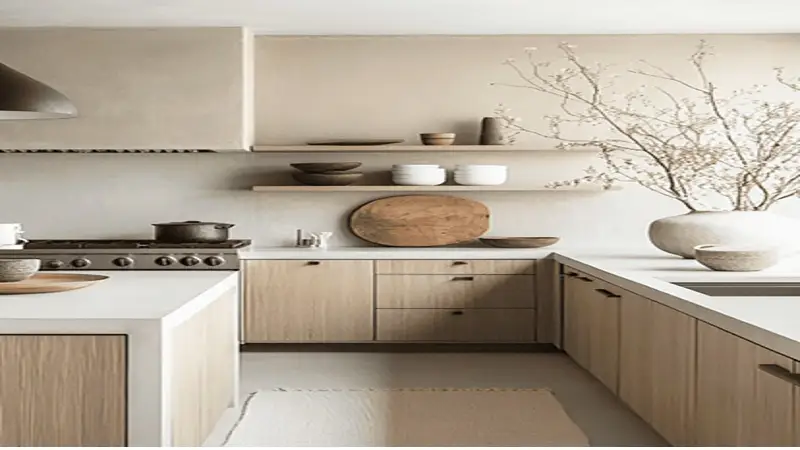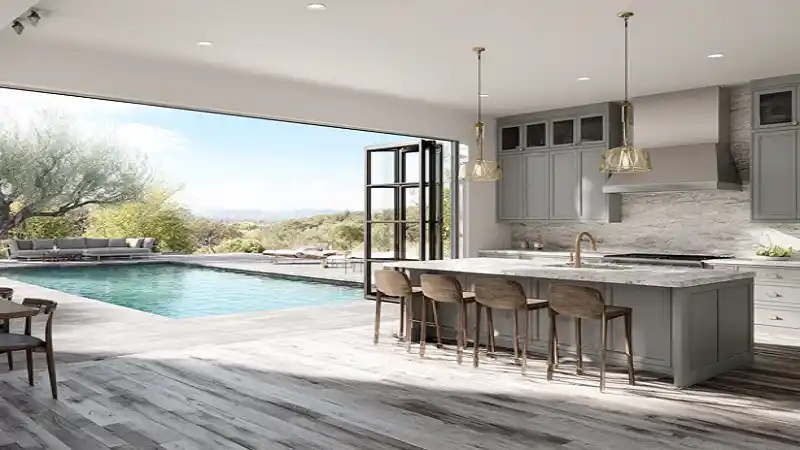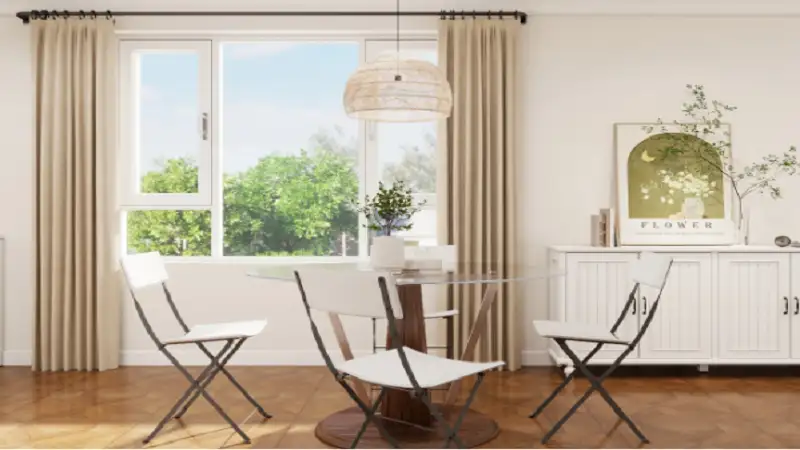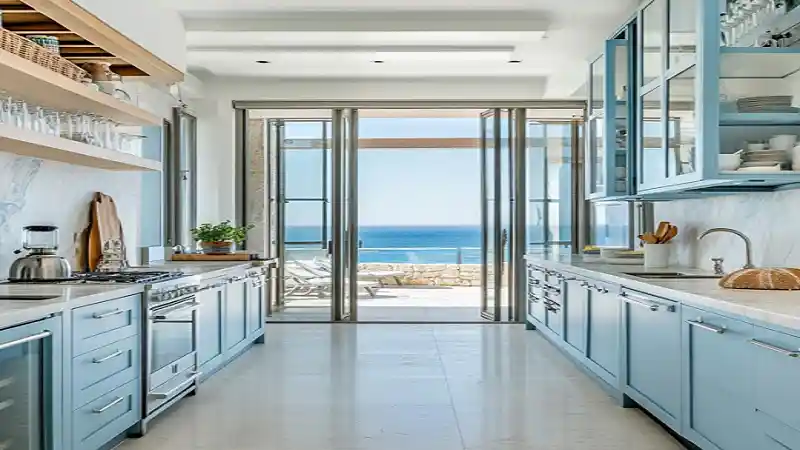
A minimalist kitchen is all about balance—clean lines, clutter-free surfaces, and a sense of calm. However, simplicity doesn’t mean sacrificing style or personality. With the right approach, you can achieve a minimalist kitchen that’s both functional and beautifully curated. The key is to be intentional with decor choices, focusing on essentials that add warmth, texture, and charm without overwhelming the space.
In this article, we’ll cover minimalist decor essentials, tips for adding personality without adding clutter, and how to choose functional yet stylish decor pieces for your kitchen.
1. Minimalist Decor Essentials for Your Kitchen
When decorating a minimalist kitchen, it’s important to focus on quality over quantity. Incorporate a few standout pieces that elevate the space rather than filling every surface with decor. Here are some minimalist kitchen decor essentials:
a) Lighting Fixtures
Lighting plays a significant role in minimalist kitchens, adding both style and function. Instead of elaborate chandeliers or overly decorative fixtures, choose sleek, simple designs that enhance your space.
- Pendant Lights: Choose a few simple, geometric pendants to hang over the kitchen island or dining table.
- Under-Cabinet Lighting: Subtle under-cabinet LED strips keep countertops well-lit and contribute to a clean, modern look.
- Statement Fixtures: A matte black or brass light fixture can serve as a focal point without overpowering the room.
Pro Tip: Stick to warm or neutral light temperatures (2700K-3000K) to create a cozy and inviting atmosphere in a minimalist space.
b) Plants and Greenery
Plants are an excellent way to add life and freshness to a minimalist kitchen without adding visual clutter. They introduce natural texture and color, breaking up the starkness of neutral tones.
- Herb Planters: Small pots of fresh herbs like basil, rosemary, or thyme add both greenery and functionality.
- Succulents: Low-maintenance succulents in neutral pots are perfect for open shelving or windowsills.
- Trailing Plants: Ivy or pothos can drape beautifully over floating shelves for a subtle decorative touch.
Pro Tip: Stick to neutral-colored planters (white, terracotta, or matte black) to maintain the minimalist aesthetic.
c) Wall Art and Prints
While minimalist kitchens typically avoid excess wall decor, a single piece of artwork can add character and personality.
- Simple Line Art: Black-and-white line drawings or abstract prints work well in minimalist kitchens.
- Neutral Color Palettes: Choose art in soft, muted tones that blend harmoniously with your kitchen’s color scheme.
- Framed Photography: Minimalist framed photography, such as landscape shots or monochromatic images, adds visual interest without clutter.
Pro Tip: Keep the frames simple—thin black, white, or wooden frames complement minimalist spaces best.
d) Open Shelving Decor
If your kitchen has open shelves, use them to display a mix of functional and decorative items that reflect your style without overwhelming the space.
- Matching Dishware: Display neatly stacked white or neutral-toned plates, bowls, and mugs for a cohesive look.
- Glass Jars: Use clear glass jars to store pantry essentials like pasta, rice, or coffee beans.
- Textured Elements: Add a small woven basket or a ceramic bowl for texture and warmth.
Pro Tip: Stick to a neutral color palette and avoid overcrowding—leave negative space to maintain an open, airy feel.
e) Minimalist Rugs and Runners
A simple rug or runner can soften the look of a minimalist kitchen while adding warmth and comfort underfoot.
- Neutral Colors: Opt for rugs in beige, gray, or taupe tones.
- Subtle Patterns: A soft, understated pattern like herringbone or stripes can add visual interest without disrupting the minimalist vibe.
- Low-Pile Materials: Choose flat-weave or low-pile rugs for a sleek, modern appearance.
Pro Tip: Use machine-washable rugs for easy maintenance, especially in high-traffic kitchen areas.
2. How to Add Personality Without Adding Clutter
One of the challenges of minimalist kitchen decor is adding personal touches without making the space feel busy. Here’s how to add character and style without creating clutter:
a) Choose a Few Statement Pieces
Instead of filling the room with small decorative items, select one or two statement pieces that reflect your personality.
- A large ceramic vase with dried pampas grass
- A sleek fruit bowl in a bold, modern shape
- A vintage coffee maker or stylish pour-over set displayed on the countertop
Pro Tip: Stick to one statement item per surface (e.g., the island, counter, or dining table) to maintain balance.
b) Incorporate Natural Materials
Adding natural textures, such as wood, stone, or linen, can make a minimalist kitchen feel warm and inviting.
- Wooden cutting boards leaned against the backsplash
- A marble tray to corral cooking essentials (oil, salt, pepper)
- Linen hand towels in neutral tones
Pro Tip: Limit decorative kitchen textiles to one or two items to avoid overcrowding the space.
c) Display Everyday Essentials Beautifully
Functional kitchen items can double as decor when thoughtfully displayed.
- Store coffee beans in an aesthetically pleasing glass jar instead of the original packaging.
- Hang high-quality kitchen utensils on a minimalist wall rack instead of hiding them in a drawer.
- Use ceramic canisters for sugar, flour, and other dry goods rather than plastic containers.
3. Tips for Choosing Functional Yet Beautiful Decor Pieces
Minimalist kitchen decor should serve a purpose while enhancing the overall aesthetic. Here’s how to make decor choices that are both practical and stylish:
a) Prioritize Multi-Functional Items
Opt for decor pieces that have both aesthetic and functional value.
- A stylish wooden cutting board can double as a serving platter.
- A chic ceramic pitcher can hold utensils or be used for water at the dining table.
- A decorative bowl can be used for serving or as a centerpiece.
b) Stick to a Cohesive Color Palette
A limited color palette helps maintain the clean, streamlined look of a minimalist kitchen.
- Choose decor in shades that complement your kitchen’s primary colors.
- Stick to neutrals, soft pastels, or earth tones for a calming effect.
- Avoid bright, clashing colors that disrupt the minimalist aesthetic.
c) Invest in Quality Over Quantity
In a minimalist space, every item should feel intentional. Instead of filling your kitchen with trendy, inexpensive items, invest in a few high-quality pieces that will last.
- Look for timeless decor that won’t go out of style.
- Choose durable materials like ceramic, glass, or natural stone.
Conclusion
Decorating a minimalist kitchen is about finding the perfect balance between style and simplicity. By focusing on essentials like stylish lighting fixtures, greenery, and subtle art, you can create a space that feels both functional and inviting. Add personality with carefully selected statement pieces and natural textures, but avoid clutter by keeping surfaces clean and organized.
Ultimately, a minimalist kitchen should reflect your lifestyle and aesthetic preferences while maintaining a sense of calm and order. With the right approach, your kitchen can be a beautiful example of how simplicity and style go hand in hand.
See More:https://homestylish.org/






